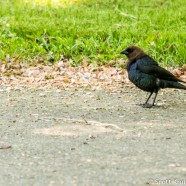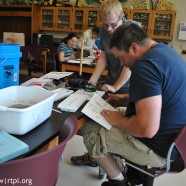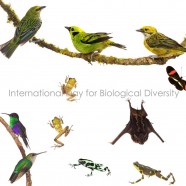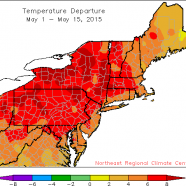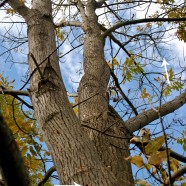Brown-headed Cowbird
This male Brown-headed Cowbird (Molothrus ater) was taking a look at all the maple seeds in this driveway, perhaps wondering why it shouldn’t eat all of this abundant and easy to grab food instead of those fast, pesky and tough to spot insects. They do primarily eat seeds, and I guess you have time to wonder these things when you leave the difficult task of raising your young to another species. Scott Kruitbosch Conservation & Outreach Coordinator
Read MoreSuccessful WAVE Training
We couldn’t have asked for a more gorgeous day to get out into a local stream and evaluate its water quality! Here are some photos from last week’s WAVE (Water Assessments by Volunteer Evaluators) training led by NYS DEC. Using the knowledge and hands-on experiences that was gained through our training, each of us will be able to go out and assess nearby streams to determine if they are impacted by pollutants, sedimentation and so on based on the little critters (macro-invertebrates) we find living beneath the rocks and logs within each. As we work on the Chadakoin River, in...
Read MoreInternational Day for Biological Diversity
Sean saw a lot of great posts today about International Day for Biological Diversity and couldn’t help but put something together. He has been missing the tropics a lot lately, but can’t wait to see the biodiversity start to pick up in our area in the Northeast – and it’s happening now! Photographed by RTPI Affiliate Sean Graesser for the Meet Your Neighbours global biodiversity project in Costa Rica and Panama for the Roger Tory Peterson Institute of Natural History.
Read MoreScorching May
The first half of the month of May 2015 was a quietly scorching one, with the heat turned all the way up in the Northeast. You may not believe it based on the outdoor feel of our day to day weather, but the entire region was far warmer than usual. While we did not have the extreme highs or actual heat waves, a stretch or days well into the 90s or anything particularly memorable, we have been consistently warmer than average for our highs and often above the long-term lows. The Northeast Regional Climate Center map here shows us the tale. The coolest part has been sections of Maine which were...
Read MoreBirds As EAB Indicators
Being small in size as an adult and hidden underneath tree bark as larvae, Emerald Ash Borer (EAB) can be rather difficult for humans to detect. For bark-foraging birds such as woodpeckers however, this is not a difficult task. As these birds move up and down a tree’s trunk and branches, they listen for larvae chewing on the wood and can even feel vibrations from the larvae moving through the galleries they create. Once detected, woodpeckers will hammer away at the bark in order to collect the larvae beneath. While the larvae is removed from the bark, a hole and missing bark around...
Read More



